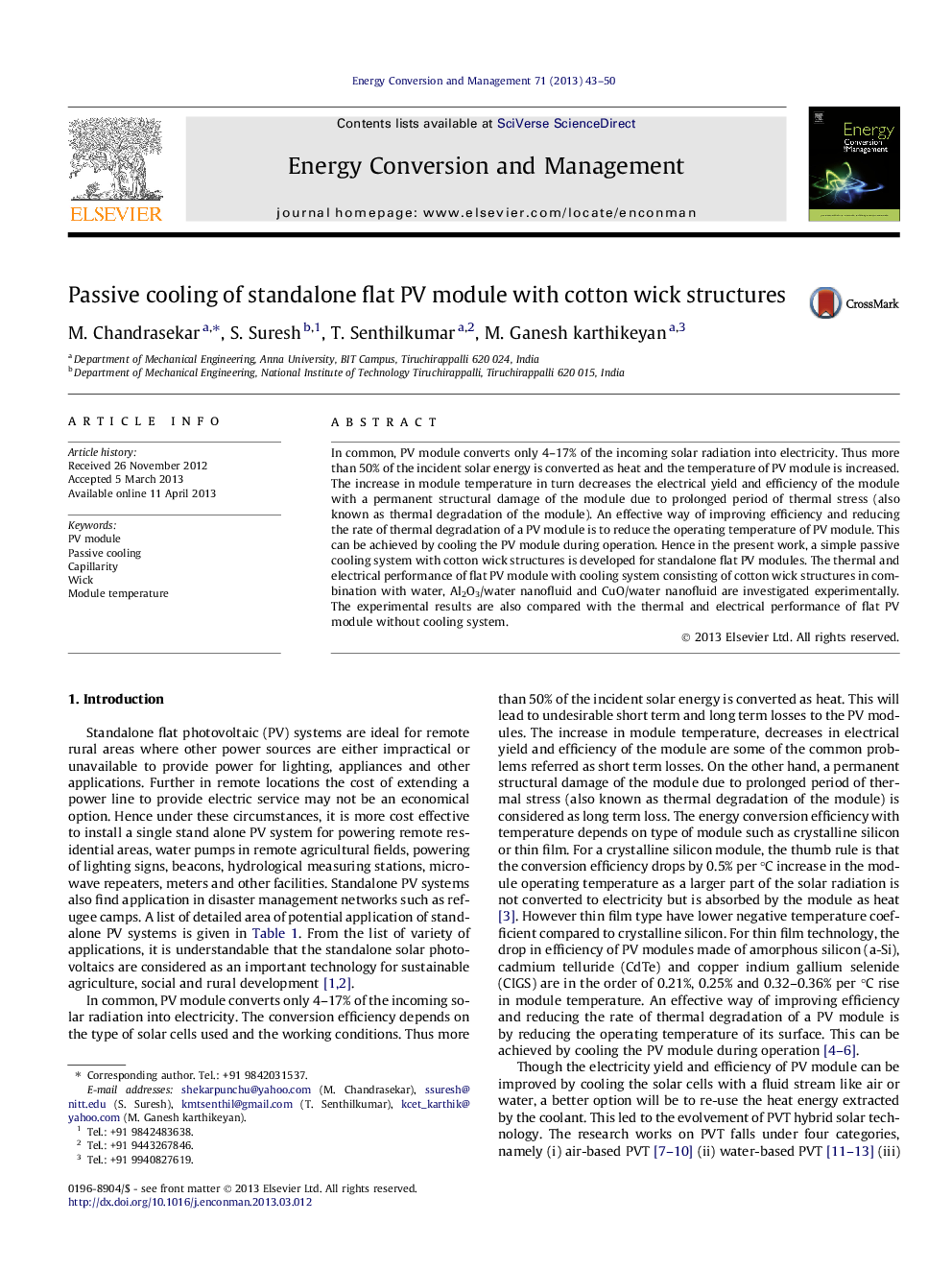| Article ID | Journal | Published Year | Pages | File Type |
|---|---|---|---|---|
| 772145 | Energy Conversion and Management | 2013 | 8 Pages |
•A simple passive cooling system is developed for standalone flat PV modules.•30% Reduction in module temperature is observed with developed cooling system.•15.61% Increase in output power of PV module is found with developed cooling system.•Module efficiency is increased by 1.4% with cooling arrangement.•Lower thermal degradation due to narrow range of temperature characteristics.
In common, PV module converts only 4–17% of the incoming solar radiation into electricity. Thus more than 50% of the incident solar energy is converted as heat and the temperature of PV module is increased. The increase in module temperature in turn decreases the electrical yield and efficiency of the module with a permanent structural damage of the module due to prolonged period of thermal stress (also known as thermal degradation of the module). An effective way of improving efficiency and reducing the rate of thermal degradation of a PV module is to reduce the operating temperature of PV module. This can be achieved by cooling the PV module during operation. Hence in the present work, a simple passive cooling system with cotton wick structures is developed for standalone flat PV modules. The thermal and electrical performance of flat PV module with cooling system consisting of cotton wick structures in combination with water, Al2O3/water nanofluid and CuO/water nanofluid are investigated experimentally. The experimental results are also compared with the thermal and electrical performance of flat PV module without cooling system.
